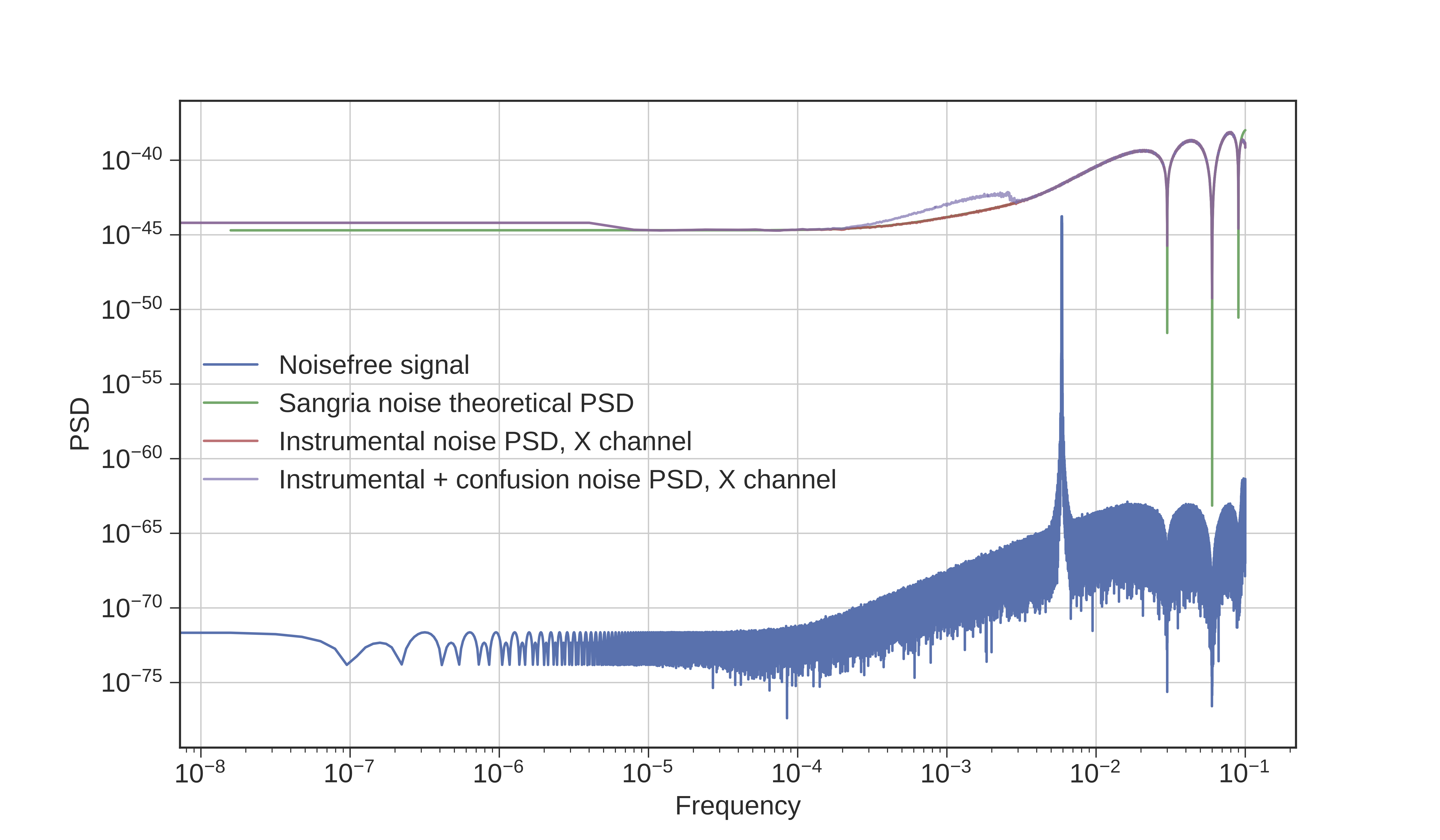LISA Data Challenge 1b: Yorsh
We are glad to announce the release of several datasets in the LISA Data Challenge, codenamed Yorsh. The purpose of this fourth challenge is to tackle the data analysis of complex waveform LISA sources separately, under an idealized instrument-noise model.
Yorsh includes 3 subchallenges, described below. This challenge will not be blind (source parameters are available), but you are welcome to try the analysis without referring to the answer. Furthermore, versions of the datasets without instrument noise are included in the release for EMRI sources only. LDC working-group members will be preparing their own analysis using their algorithms of choice, and invite you to join them (to do so, e-mail us so we can pair you appropriately). Of course, you may organize to work on your own, or with your collaborators.
For usage tracking purposes, we request that you set up a login for this website before downloading the datasets. Please submit your results by March 1st, 2025, using the submission interface and format that will appear shortly on this page. Please plan to include a description of your methods (or a link to a methods paper) with your submission. We would also greatly appreciate it if you were to share your code (e.g., on GitHub, or our GitLab).
While we did our best to check the datasets for correctness, small problems or inconsistencies may have escaped us. The best way to validate the data is to analyze it, so let us know of any problems!
Features common to all datasets
The dataset contains TDI-2 (X, Y, Z channels) timeserie signals for instrumental, galactic confusion noise (stochastic GW foreground) noises and astrophysical sources (SOBHB and EMRI). The instrumental noise is simulated according to the sangria model. Each generated timeserie is 2 years long with 5 sec cadence. The instrumental noise was generated using LISANode (version 1.3) while noisefree TDI have been generated using pytdi (version 1.3.1). We used the arm projection implementation of the LDC (version 1.2.0). For generation of Yorsh data we have used analytic (constant and equal arms) LISA orbits.
LDC1b-1: Two GW signals from merging stellar-origin binary black holes
The SOBHB subdataset contains eight SOBHB signals in the form of TDI-2 X, Y, Z channels. Source parameters have been chosen so that the SNR of the signals is either close to 10 or close to 25. SOBHB signals are represented with a frequency-domain inspiral–merger–ringdown phenomenological model (IMRPhenomD) that has been transformed to time domain thanks to a stationary phase approximation. The black holes are spinning, with spin vectors parallel to the orbital angular momentum.
LDC1b-2: Three GW signals from extreme-mass-ratio inspirals using Schwarschild's non-processing model
The EMRI subdataset contains three EMRI signals in the form of TDI-2 X, Y, Z channels. The EMRI signals should be detectable and spread in the plunge time (before 6 month, before 2 year and after 2 year). We have used FEW (https://bhptoolkit.org/FastEMRIWaveforms/) model with the version tag 2.0.0 and waveforms correspond to eccentric orbits around Schwarzschild MBH. The range ofeccentricity was restricted by the model [0 - 0.7]. The EMRI TDI were generated using h+, hx produced by FEW and fed into LDC tools to make projection on single links and TDI generation (using interpolations).!
